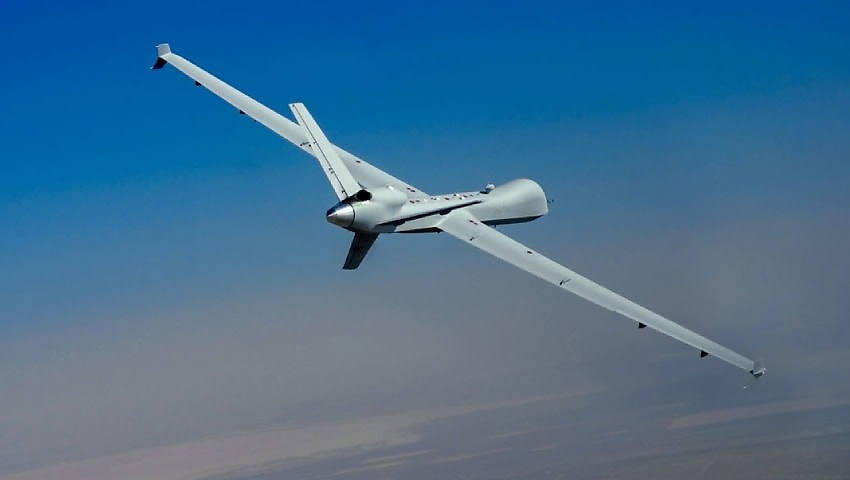General Atomics Aeronautical Systems (GA-ASI) and the Air National Guard (ANG), with joint support from the US Marine Corps (USMC) and US Air Force (USAF), flight tested an MQ-9A remotely piloted aircraft (RPA) equipped with a low-Earth orbit (LEO) satellite communications (SATCOM) command and control system.
To continue reading the rest of this article, please log in.
Create free account to get unlimited news articles and more!
This milestone capability provides global coverage and connectivity that will enable pole-to-pole operations for GA-ASI’s family of RPA — including models such as the MQ-9B SkyGuardian/SeaGuardian, MQ-9A Reaper, and Gray Eagle 25M.
GA-ASI president David Alexander welcomed the successful flight test, saying: “This is truly game-changing for our platforms. Using LEO SATCOM not only keeps GA-ASI aircraft connected from the North Pole to the South Pole to allow operations in the most austere environments, but it will also provide resilient connectivity that allows operators to pass much more data to and from the aircraft.”
Early testing indicates LEO SATCOM significantly reduces latency and can be used in all phases of flight. For customers across the MQ-9 family of systems, LEO SATCOM should decrease operational costs, and the smaller hardware footprint will ultimately increase flexibility and reduce future payload integration costs.
The MQ-9A flight test was based out of GA-ASI’s Gray Butte Flight Operations Facility near Palmdale, California, and followed several weeks of ground testing.
General Atomics Aeronautical Systems, an affiliate of General Atomics, is a leading designer and manufacturer of proven, reliable remotely piloted aircraft (RPA) systems, radars, and electro-optic and related mission systems, including the Predator RPA series and the Lynx Multi-mode Radar.
With more than 7 million flight hours, GA-ASI provides long-endurance, mission-capable aircraft with integrated sensor and data link systems required to deliver persistent flight that enables situational awareness and rapid strike.
The company also produces a variety of ground control stations and sensor control/image analysis software, offers pilot training and support services, and develops meta-material antennas.

 Login
Login






